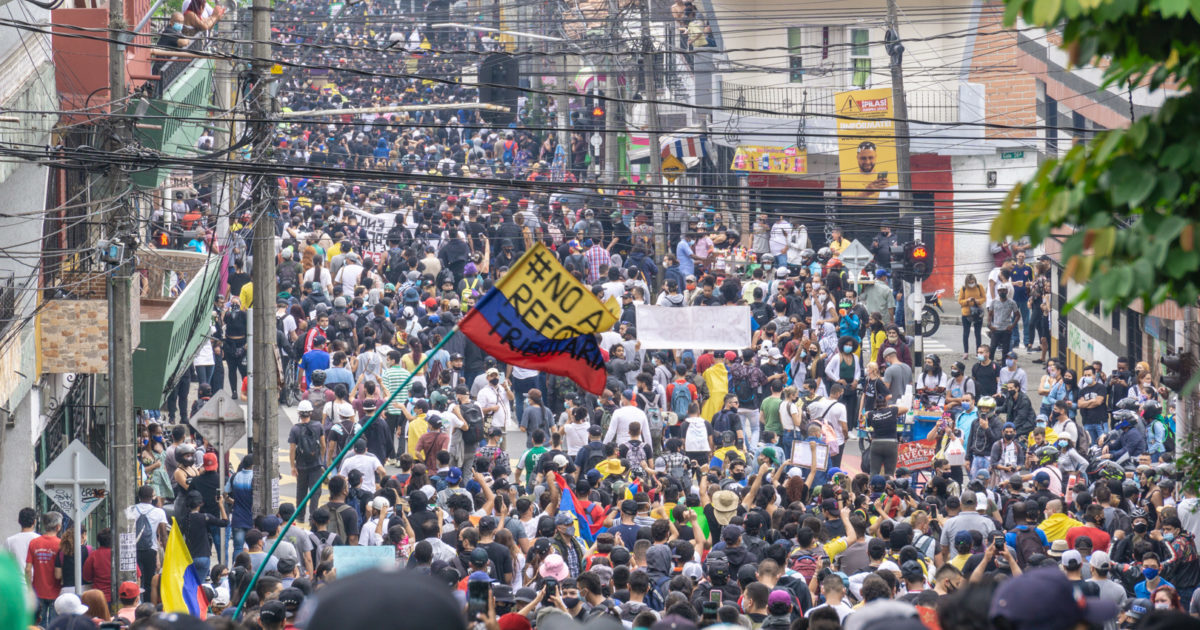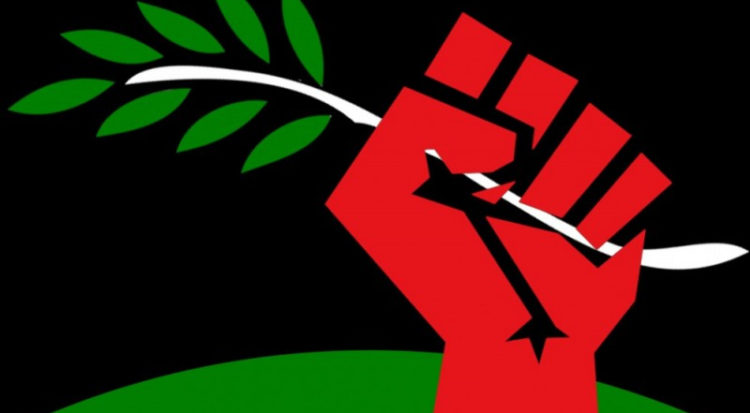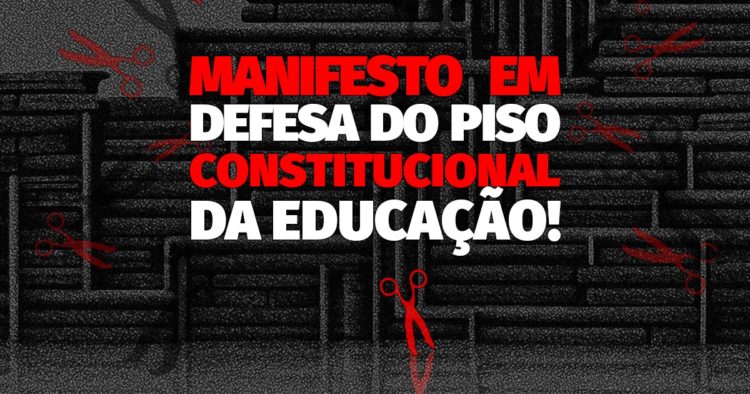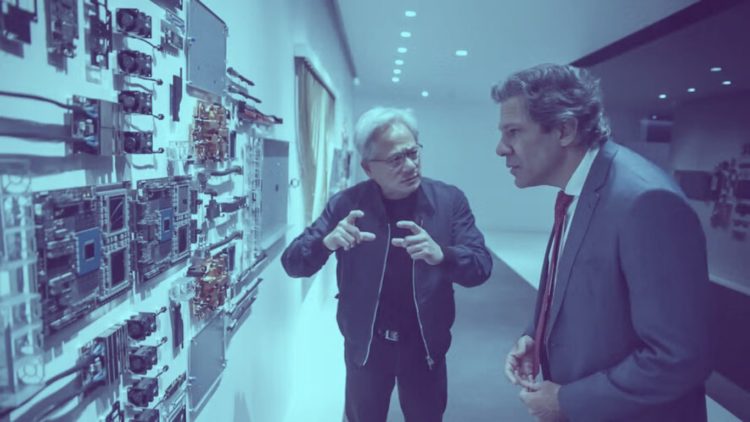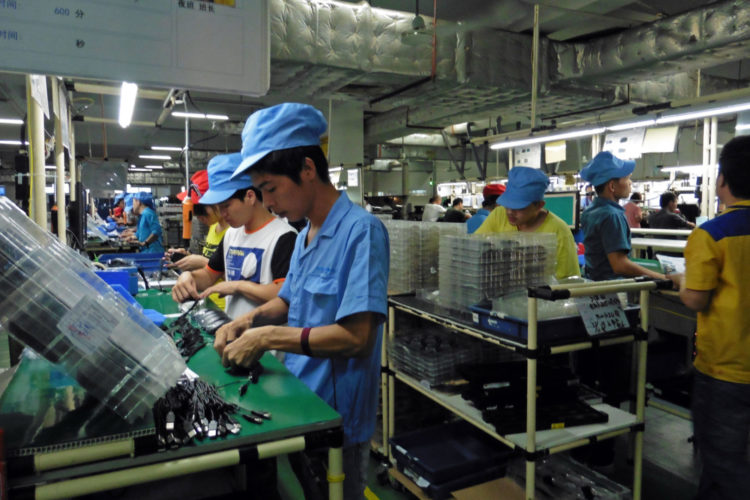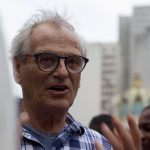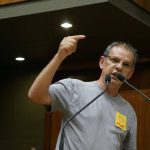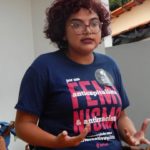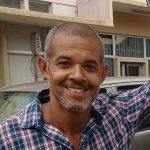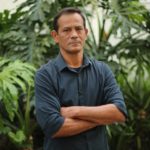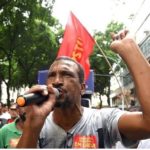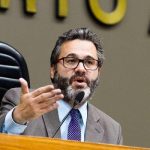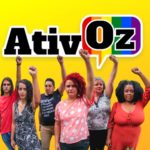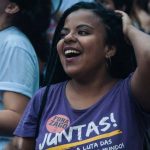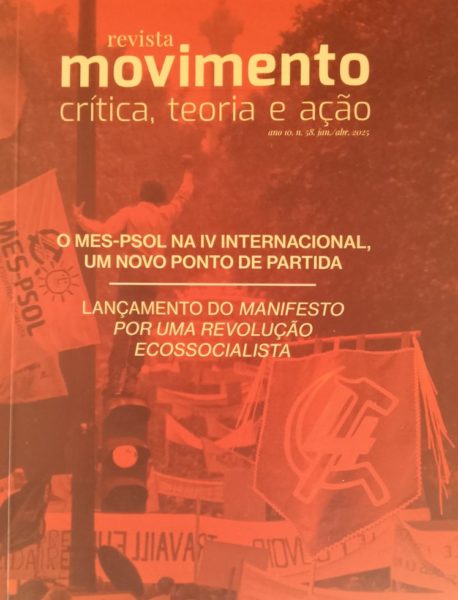Contribution about Latin America
This report is a contribution to the debate at a time when a new wave of struggles is developing and new governments are emerging.
1. Two great waves of ascent in Latin America
In this XXI century we had in Latin America two great waves of mass uprising. The one that had its beginnings in the 2000s with the insurrections or rebellions in Ecuador, Argentina, Bolivia, the defeat of the coup in Venezuela, and that had as its most visible political expression Bolivarianism. And then a new wave announced in the mobilizations of 2018 (Nicaragua, Puerto Rico, Haiti), and that developed strongly in 2019 in the Andean mobilizations of Ecuador, Chile, Bolivia, Peru and later Colombia, and more recently again Ecuador and Panama.
Both waves of rebellions or insurrections left deep traces in the countries, which explain the subsequent electoral results. Except for Ecuador in the elections of 2021, in all cases new governments emerged, different from the bourgeois governments of the traditional parties, which have been generically called “progressive governments”, although, as we shall see, they have been and are different.
To see the continuity, – the elements common to these two waves -, and the discontinuity, the different or new elements, between both processes is an indispensable exercise of analysis to define the current Latin American situation, to see its inequalities and contradictions with the objective of specifying the policy and the tasks that are placed, as well as to try to see its perspective.
2. The decade of 2000
From the rise of the masses of that period of great mobilizations and rebellions, semi-insurrectional or insurrectional (Argentinazo, Ecuador, water war and defeat of Losada in Bolivia, defeat of the coup d’état in Venezuela…) two types of governments emerged later that we can clearly differentiate. Those of Lula, Mujica, Bachelet, Kirchner, which we can characterize as those of class conciliation, that made some reforms or concessions without touching the regimes and much less the system of imperialist domination. At one extreme of this type we have the government of Lula, which was clearly social liberal and included in his cabinet genuine bourgeois representatives of agribusiness, industry and banks. We also consider Kirchner’s government to be part of this type of government, although in this case he had frictions with the agrarian bourgeoisie. However, the common denominator of all of them is that they remained within the framework of the old bourgeois democratic regimes and without economic measures that substantially touched the bourgeoisie or imperialism.
On the other hand, the governments of Chavez, Evo Morales and Correa, especially the first two were of political rupture with the bourgeoisie, that is to say, they changed the political regimes even though the state continued to be bourgeois and from the economic point of view they carried out key nationalizations such as energy. Bolivia achieved the plurinational state, which was quickly reconquered after the coup d’état of 2019. Against those who put all the governments that emerged in 2000 as equal or in the “same bag” it must be remembered that Brazil under Lula played a role of brake to the development of Bolivarianism and acted as a sub-imperialism. The most advanced processes (Ecuador, Bolivia, Venezuela) were a continuity of the insurrections or popular democratic revolutionary processes that overthrew the traditional bourgeois governments in Ecuador and Bolivia. In Venezuela it was the Caracazo of 1989 that anticipated the chavismo that took force with the defeat of the military coup of 2002; in Ecuador the rebellions of 1998 and then 2000. In Bolivia the water war (2003) and then the cocalero uprising that overthrew Losada (2005), the argentinazo of 2001 that gave rise to Kirchnerism, a bourgeois government to the left of Lula.
The radical anti-imperialist governments (Evo, Correa, Chavez), like those of greater class conciliation and social liberals (Lula, Bachelet, Mujica, Kirchner) were relatively stable processes, that is to say, they lasted almost a decade or came close to it. As we have already said, the social liberals or those of conciliation made mere reforms or concessions; the radicals took economic measures (nationalizations) and modified the political regimes with new constituents.
3. The favorable conditions of the first wave
This first wave occurred in the midst of two conditions that favored it. On the one hand, there is the economic situation of a worldwide rise in the prices of raw materials that produced the tailwind to achieve GDP growth for almost a decade. And on the other hand, in its beginnings, there was the defeat of the ALCA, a Yankee semi-colonization plan that was rejected thanks to the rise of the masses and also because bourgeois sectors were opposed to it. With this there is a withdrawal of American imperialism, even though it retains its influence in the north and center of Latin America. At that time Chinese imperialism also becomes more present, which means a new geo-economic situation in LA that continues to this day. Chinese imperialism began to make investments especially in mining extractivism, although it also works in industries and banking. In any case, it cannot be disregarded that despite its decline, American imperialism continues to have the main political and economic influence.
4. This situation of ascent in Latin America produced the Bolivarian alternative
Chavism was a leadership with an anti-imperialist program of Latin American integration, nationalization and mixed economy. Faced with it, we practiced at different times an anti-imperialist united front policy, supporting progressive measures without losing political independence. This leadership carried forward the ALBA project, which although limited to a few countries, broke the isolation of Cuba. The possible Latin American integration was stopped by politics at the service of the big bourgeoisie and especially by the Brazilian government.
The highlight of this period was the emergence of an enthusiastic anti-imperialist and anti-capitalist vanguard, (let us remember that Chávez spoke of the socialism of the XXI century). The PSOL with its own characteristics was part of this process, and on our part, we actively participated in it.
5. The reactionary situation
The reactionary governments of Piñera, Bolsonaro, Uribe-Duque, Macri, to which we must add Maduro and Ortega, (why not the more repressive turn of the Cuban regime), are more than a mere accidental interregnum between two waves. It would be a facile and linear analysis to consider them as such. There is an important interruption where Trump’s triumph, the reactionary coups in Honduras, Paraguay and later Brazil appear. If we compare it with the neoliberal period of the 90’s, it was shorter, unstable and unequal. One of the fundamental features is that authoritarianism with neo-fascist characteristics is emerging on a global scale and also in Latin America. This is a consequence of several factors that combine:
a. the economic crisis of 2008, which arrived late to Latin America, but which did so in a devastating way, to which was then added the very serious health crisis of COVID;
b. the crisis of the political regimes of alternation of the traditional parties that were already suffering the blow of the rise of the 2000s;
c. the decline of progressivism, in particular the closing of the progressive cycle of Chavism in Venezuela, most notoriously with the death of Chavez.
These elements: economic crisis (now a combination of inflation and GDP stagnation), crisis of regimes, decadence of “progressivism”, migratory flows, growth of Evangelical Churches, are components that lead sectors of the middle class, workers and popular sectors to join an ultra-right that remained in a latent state, to revitalize itself and give rise to ultra-right governments with neo-fascist characteristics. This neo-fascist authoritarianism became a new reality that endures even though, as we shall see, the new wave is displacing them from power.
6. The new wave of ascent. Essentially democratic triumphs with new characteristics
The map of Latin America began to be tinged with new mobilizations which, as we shall see, had many points in common with the previous wave of ascent. Large mobilizations, semi-insurrections and rebellions that confronted right-wing governments were repeated. The indigenous and popular uprising in Ecuador, the prolonged insurrectionary situation in Chile, the mobilization led by the mining workers that defeated the coup government of Añez, the Peruvian peasant and popular workers mobilizations that did not have the same magnitude as the previous ones, the general strike and popular rebellion in Colombia with the subsequent epicenter in the city of Cali. In their reflux they again left marks for new governments to triumph over the most reactionary right-wingers in power.
These were important democratic triumphs. If we start a certain chronology we find first the triumph of Lopez Obrador against the old regime heir of the PRI (Partido Republicano Popular) in Mexico, we can include with doubts Fernandez against Macri in Argentina, Castillo over Keiko in Peru, Boris over Piñera and Katz in Chile, perhaps the most convincing of Arce in Bolivia defeating the coup and crushing in the electoral field, Xiomara Castro in Honduras, Petros in Colombia over Uribism, and the probable triumph of Lula in Brazil. In Ecuador, this triumph was not achieved due to the divisive politics (objectively pro Lazo) of a sector of Pachakutik.
Having the common denominator of being democratic triumphs against the neo-liberal or authoritarian-neofascist right wing, they do not have the same origin. While Lula is an old acquaintance of the ruling classes, in Colombia we have a former guerrilla fighter, in Peru a teacher and in Chile a former student leader.
7. Continuity with 2000
The elements of continuity, the points in common with the first wave are to be found in the situation of social crisis due to the adjustment measures that bring as a consequence the discredit of the governments and the situation of growing social unrest that reaches explosiveness. And the great mobilizations and popular democratic rebellions that they unleash.
As in the first wave, the electoral results follow a process of mobilization, rebellions and popular insurrections.
8. The differences
We share the joy for the triumphs achieved. The defeat of the right wing is no small thing. It means more democratic freedoms for the mass movement. However, it is necessary to avoid exaggerations about the scope of the new governments, to give them a context, to point out their contradictions and possible limits, questions of which those sectors of the left that idealize progressivism and already take for granted the birth of a new period of deep reforms and welfare for the workers and the people, as well as a new Latin American integration, are not friendly. The situation is not the same as in the first wave.
a. There is now a multidimensional crisis. Twenty years have passed. The picture in which we live this new wave is that of a higher crisis of capitalism, characterized as multidimensional, where the economic, social and political crisis are interconnected, aggravated by the pandemic of Covid and now with the aggravation of an inter-imperialist struggle with the war of aggression of Russia against Ukraine. This war brings with it more world disorder and chaos and even the threat of nuclear war. In this situation we live in a world of instability, permanent crisis and uncertainties (with differences of hours we had the resignation of Boris in England, the assassination of Abe in Japan, and the hasty departure of the president of Sri Lanka when the demonstrators invaded the seat of government).
b. The demands and social subjects were broadened. It must be said that the social subjects became broader, starting with the leading role of women and their demands. The demands of the native peoples, the racial struggle and the defense of nature were also incorporated in a clearer way, in addition to the struggle of workers, especially service workers. This also leads to the need to make a greater leap in terms of aggregate demands and active social subjects. However, the democratic character, that of the slogans claiming diversity is added, but one still feels the lack of the “column that vertebrates” the set of demands that cannot be other than the workers’ movement. At other times this role was played by the proletariat, especially the industrial one. But now we are experiencing a process of deindustrialization that has weakened what was once the backbone. This is happening in the Andean countries and in general throughout South America; perhaps it is not the case of Mexico and some Central American countries where the U.S. has invested in machines to partly replace imports from China. The anti-capitalist left has to learn to live with this situation, without abandoning, of course, its insertion and politics towards the workers and service workers who are fundamental, but without being schematic, incorporating the new subjects and the new forms of power that may appear.
c. There is more social polarization and mobilizations have suffered a lot of repression. Authoritarianism did not end with the democratic triumphs. Although it lost space it is not crushed and can be revived as it seems to happen with Trump in the USA. It has become a new enemy of the mass movement that must be taken into account in the present and in the future.
In 2000 as now in 2019 there was repression. However, in the new wave it was more intense and persistent as a consequence of the implant that the right wing achieved in a sector of the middle class, especially in the upper middle class that supports it. At the same time, we now have a courageous, persistent and radicalized mass vanguard that confronts the repression of the governments that kill demonstrators and injure thousands.
d. The leaderships of progressivism played the role of rearguard and/or brake in the mobilizations. In Colombia the bureaucratic trade union leaderships and the leaderships of progressivism remained halfway (let us recall that Petros and the mayor of Bogota pronounced themselves for the lifting of the measures after the government decided to stop the tax reform). In Chile, when the mobilization was also on the rise, the Frente Amplio, Convergencia Social and the Concertación (with the exception of the CP) entered into the constitutional pact that made it possible to stop the mobilization.
e. There did not emerge a leadership that would become an alternative neither at regional level nor by country. If the first wave gave the process of Bolivarianism, which with its limitations was a leadership that grouped broad sectors of the vanguard of the mass movement and the masses themselves in Venezuela, in this second wave this did not happen. A broad and very combative vanguard appeared which bravely confronted repression and took up radical slogans, but this process did not take shape in an alternative direction. If they occurred, they were partial or local phenomena.
A factor that must have its weight for this deficit is the aggravation of the same crisis that if on the one hand demands an anti-capitalist program, on the other hand there is a crisis of program due to the regression of consciousness, which is even more aggravated with the situation of Venezuela, which is seen as the failure of Bolivarianism or socialism of the XXI century.
On the other hand, there is the adaptation to bourgeois democracy of broad sectors of the old vanguards and we must recognize the weakness of the extreme left and Trotskyism in these processes.
f. The leaderships of the governments that emerge are less hegemonic both in their relation with the mass movement and the vanguard. Although expectations and support vary from country to country there is less unconditional adhesion; more reservations. In the case of Chile this was evident in Boric’s voting between the first and second round. Boric emerged from a concertation and not from a linear continuity of mobilization. In Peru the adhesion to Castillo is dissipating rapidly, in Argentina there are already several years of experience with Fernandez and in Brazil we know that the PT as an organism has lost organic adhesion in the movement, but not the figure of Lula.
9. The new governments
The situation we have described makes the governments that have emerged (Peru, Chile, Colombia) more fragile, more precarious and unstable than the previous period. Objectively, the crisis situation and the absence of margins make it necessary to take far-reaching measures (debt moratorium, taxation of large fortunes, agrarian reform are some of them), and they will come up against two stumbling blocks. On the one hand, the governments themselves, fearful of relying on the latent mobilization from which they come, prefer to ally themselves with the center (the most democratic parties defenders of the bourgeois regimes; liberals in Colombia, Concertación in Chile, Tucanos in Brazil), to administer the state and dissociate themselves from the right, trying to reestablish bourgeois-democratic regimes.
This pressure towards “democratic fronts to govern” exists throughout the continent. However, we cannot put a sign of equality among all the countries, there are inequalities, but in the political field the governments (independent of their different origins) appear with more similar policies among them than those of the 2000 wave. In general, all the so-called progressivism tends to conciliation. We say tendency because they are not in all cases crystallized processes. The mass movement can burst (as in June 2013 in Brazil or recently in Ecuador), and modify the course. Let us look at these characteristics in some countries.
In Peru, one year after taking office the government is on the ropes. It has lost the support of a sector of the masses, its prestige is growing due to inoperability and corruption, and it is suffering the offensive of the right wing. Castillo is characterized for being a government that is inoperative for nowhere. It is not supported by the masses and the bourgeoisie despises it. A sector of the left is beginning to raise the slogan “let them all go” which is wrong because it plays into the hands of the right wing, but which in any case indicates the crisis in which the government and the country are submerged. It is a government that is “on the ropes” and that will hardly finish its term of office.
In Chile the possibilities of a government that takes progressive measures and tightens the rope with the bourgeois sectors seem to be closed for now. Boric has so far assumed a conciliatory policy that has been discrediting him (according to surveys he has a 33% approval rating). The fact that he has not released the prisoners and that he established a regime of exception in the zone of conflict with the Mapuche must have demoralized the most combative sector that already had its logical distrust with his policy of the parliamentary agreement that dismantled the mobilization. On the other hand, the new constitution, which has progressive points, particularly the reform of the presidency and gender equality, is under the real threat of remaining on paper for now. The NO vote in the polls appears with strength. We cannot rule out the possibility that it may win due to the demobilization and disappointment of a sector with Boric. It would be a major setback of the stage started in 2019. If the YES wins (which can be especially by the vote of women), democratic and feminist conquests can be consolidated within the limits of the system, but with a different regime. A period of demands would be opened for the government and parliament to implement them.
Bolivia was the country where the democratic triumph was most resounding in every sense and especially for the defense of the plurinational state. In this country, the reactionary interregnum was brief. It also appears as the most stable government, perhaps as a consequence of this triumph and because of its economic situation (gas and lithium). The fights within the MAS we do not know if they are over the state apparatus or political differences, but they indicate the uneasiness that exists in the government party.
Colombia was a democratic triumph over the old regime and in particular Uribism and its continuation in Duque, which is an alliance of bourgeois sectors with drug trafficking, landowners and paramilitaries, a regime that practiced paramilitarism with thousands of deaths. The course of the government, which has not yet assumed office, appears to be open. A first democratic task will be how to dismantle this apparatus. Petros-Francia are proposing a “great national agreement” and Petros has already met with Uribe. There is a genuine feeling of peace in Colombia, what is not yet clear is what the government’s policy will be to carry it forward. In order to do so, it must dismantle the repressive state apparatus, a difficult task if it does not appeal to social mobilization. What is already an achievement is the arrival to the vice-presidency of a black woman from the poorest communities. This strengthens the Colombian and Latin American black movement.
Argentina is perhaps the weakest link, where the greatest crisis is concentrated and a consequent situation of impoverishment and hunger of the masses, as a result of the adjustment plans dictated by the IMF. The government has been left very weak, and the experience with Alberto Fernandez is advanced, not to the same extent with Cristina and Kichnerism, which appear as a differentiated wing of the government. A sector of the piqueteros has already left that encirclement, which strengthens the piquetero movement where sectors of the FIT have strength, which in turn has had an important electoral advance. The FIT(U) is still only an electoral front. It would be an important advance for the workers of Argentina if it were to be transformed into an organization or political party that would bring together the entire left in that country to provide an independent alternative to confront the government, Macrismo and the emergence of Milei’s proto-fascist right wing.
In Ecuador again, the indigenous movement carried out a 17-day strike and road blockade that forced Lazo’s government to negotiate. Lazo avoided his fall because a sector of Pachakutik did not vote for his dismissal in parliament. On the other hand, it seems that this time the support of the urban middle class to the indigenous mobilization was lower, thus confirming the tendency to polarization with a sector that goes to the right. The result was a relative triumph for the indigenous and popular movement since Lazo continues and will try to return with his measures.
10. A period of upswing favorable to the mass movement
There is a favorable change in the movement whose future is not categorically defined. We think that this period with its contradictions will not close in the immediate future. Its rhythm will depend on new triumphs or partial defeats as could be the result of the constitutional plebiscite in Chile. The general picture is one of open class struggle and the recent mobilization in Panama confirms this. The crisis will continue to detonate mobilizations and insurrections; the workers and the people are not going to let themselves die of hunger, before that they will continue to take to the streets.
11. Policy of demands and mobilization
The common point that the new governments have in common is that they will administer states in crisis and have the threat of the offensive of the right wing that will press by all means to wear them down. In this new period the movement has two hurdles to overcome: the policy of the new governments which, although it will not be the same, moves in a limited framework since they are obliged either to make counter reforms, or not to make reforms, or to make minimal reforms which are not a solution to the problems, and the threat of the right wing.
Although the policy varies from country to country there is a general issue which is the program of measures to face the multidimensional crisis ranging from wages, reduction of working hours, taxation of large fortunes, debt moratorium that will become more and more generalized, gender equality, the struggle for the defense of the environment. To demand from the governments measures that attack the crisis and at the same time go against the right wing, which is and will be an enemy that we cannot lose sight of. Because ultimately, the failure of these governments has two ways out. Either the right wing returns or we advance to more fundamental measures with new mobilizations that create popular and workers’ power.
12. To intervene in the mobilization, in the elections, to insert ourselves and to carry forward a policy of demands and denunciation without ceasing to attack the right wing, these are basic tasks of the revolutionary left. They are combined with a propaganda of the anti-capitalist program to confront the crisis. We are in the IV International to carry forward this general policy, collaborating with all its organizations and expanding our network of contacts in Latin America.
Some time ago, (a year and a half), we set ourselves the task of carrying out meetings that would bring together the sectors to the left of the São Paulo Forum. This policy was truncated, and its fundamental objective cause was that organizations yielded to the pressure of progressivism. That period has not yet ended, for which reason our policy is more of propaganda in this field and of concrete campaigns such as the one in Nicaragua and to advance in a concrete internationalism such as the one we are practicing. The political experience that the left will make in Brazil if Lula wins, will be part of our contribution that we will be able to give to the left and the vanguard to strengthen an anti-capitalist pole.
Pedro Fuentes was founder of the International Relations Secretariat of PSOL and is a leader of MES/PSOL (Movimiento Esquerda Socialista/ Partido Socialismo e Liberdade).
